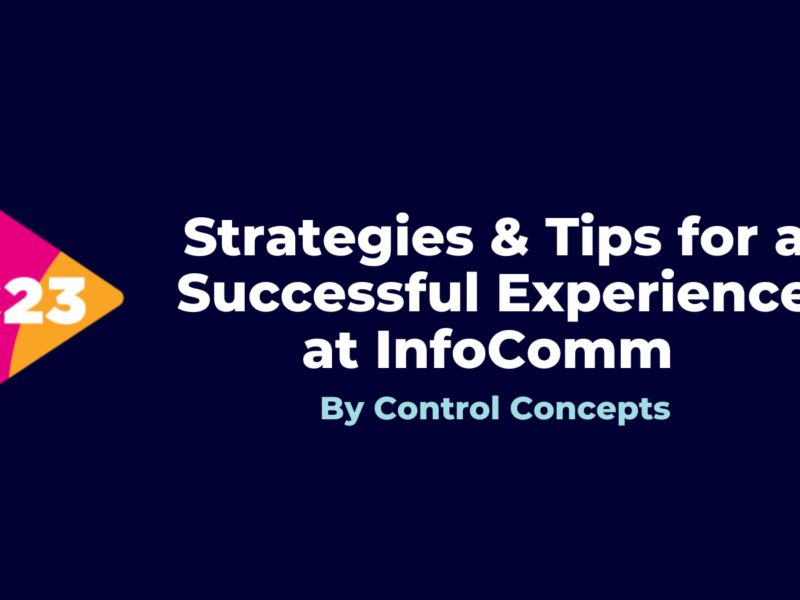How Everyone is Connected Through User Experience
User experience (UX) is quite the buzz word these days in the AV industry. User experience not only describes the seamless operation of an AV system addressing needs and pain points of users, it also captures the emotion a user feels when utilizing the space and interacting with technology. User experience is built upon a user interface that is inviting, modern, consistent, reliable, and easy to operate. However, user experience also takes into consideration the entire process that a user undergoes when working with technology, appreciating the finer details of the installation and room aesthetics, and feeling of comfort in the environment. Care, consideration, high quality, and attention to detail are the underlying factors that contribute to the feel that a quality user experience embodies.
Thinking more broadly, user experience isn’t just about the audiovisual industry, technology, or even a particular user type. Isn’t a great user experience something that everyone can relate to and strives for as part of daily life?
From a business perspective, the focus of UX shouldn’t be limited to the end user, it is also relevant to all the relationships and transactions involved in contributing to the project, product, service, or desired outcome. In a restaurant, for example, the server or chef may deliver the user experience. However, there are a host of roles like those who bus the tables, clean the dishes, print the menus, decorate the space, and maintain the building that contribute to creating the UX.
Quality customer service, top level support, and ease of doing business are great examples of how the value of user experience extends beyond just that of the system operation. In fact, each company or person involved in delivering the final product contributes to the outcome of the project and user experience. Moreover, they also have their own user experience throughout the process.
One way to evaluate user experience is by seeking to know how your company’s products and services are seen through the eyes of your clients. How often do you consider the idea of putting yourself in your clients’ shoes or the approach of treating your client the way that you would like to be treated?
The same way that culture is a product of leadership, happy employees lead to happy clients making it easier to deliver a great user experience when companies work well together internally as well as with external partners or suppliers. This in turn reflects favorably on the outcome of the project or product. It is important to consider that everyone who contributes to a project has a client to satisfy and in turn is a client themselves.
From a manufacturers’ standpoint, it is often discussed that it is not the label of the box, the specific performance specifications, product capabilities, or even the price that results in sales and adoption. Rather, it is the outcome that the product provides and its ability to address a need that is most important to clients. Reliability, support, ease of use, and ease of implementation are looked at as deciding factors in selecting one product over another.
Manufacturers who provide a great user experience for programmers and integrators have products that are well documented and supported, provide consistent operation, are easy to install, and are accompanied by a robust API and pre-developed control modules/drivers.
Control system programmers and integrators rely upon efficiency and reliability in products in order to make their projects successful and profitable. If either one is not accomplished regularly, they will not last long very at what they are doing. Manufacturers that understand the pain points and needs of integrators and programmers by ensuring that a great user experience is had with their company and products will be rewarded.
A common misconception is that the price tag of a product plays a significant role in determining its cost. When in actuality, a lower priced product that requires extra effort to install, setup, support, service, or program results in a higher true cost. A product that is more reliable, easier to implement, has great support, and can be controlled with a well developed API and pre-developed control system module/driver will find itself in favor over a lower cost competitor more often than not. (To learn more about The Cost of Not Having Control Modules, please check out our past article.)
Just as consultants continue to work with the integrators and programmers that provide them a great user experience; integrators and programmers, whose user experience is equally exceptional with the manufacturers and their products, will be inclined to do more business and promote the value of those products.
If delivering a superior user experience for the end user is our measure of success as an industry, becoming an industry that focuses on the individual user experiences of all its constituents can become the catalyst for gaining the next level of client satisfaction and overall success.
For manufacturers that would like to learn more about how Control Concepts can help them deliver a top level user experience for programmers and integrators by making their products easier to control and implement with control system modules/drivers, we will be at InfoComm19 and would value the opportunity to meet with you. Please connect with us via our InfoComm19 contact page or reach out directly via email.
- Posted In:
- AV Industry Trends
Control Concepts
All stories by: Control ConceptsYou might also like
-
Why is it Important to Attend InfoComm? https://controlconcepts.net/wp-content/uploads/2022/04/Copy-of-Strategies-Tips-for-a-Successful-Experience-at-InfoComm23-1024x576.png 1024 576 Steve Greenblatt Steve Greenblatt https://secure.gravatar.com/avatar/2e3b2cb4ec84edcb6983a3711b205d17e3232bf366d96099b3291c500d06f4b2?s=96&d=mm&r=g

-
-
Future-proofing Programming Starts with Architecting Device Control https://controlconcepts.net/wp-content/uploads/2022/09/pexels-just-another-photography-dude-68725-1024x683.jpg 1024 683 Adam Hanson Adam Hanson https://secure.gravatar.com/avatar/ff6abd5c78d209009c29162f164156e1715ba9e0b2b5565f3173ff771de3b854?s=96&d=mm&r=g




